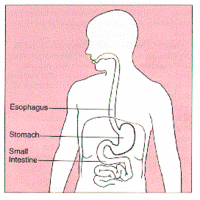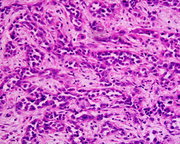Mortality from stomach cancer and stroke shows an international correlation, consistent inverse socioeconomic gradients, a particular dependence on socioeconomic circumstances in childhood,[1] and parallel patterns of decline in most industrialised countries over the past 30-40 years. The plausibility of the hypothesis that salt intake underlies this similarity has been weakened over the past decade as evidence for Helicobacter pylori as the key factor in the aetiology of non-cardia stomach cancer has increased.[2] H pylori is thought to be acquired in childhood, and risk of infection is closely related to living conditions, hygiene, and housing standards. Geographical, socioeconomic, and secular variations in the prevalence of H pylori fit well with the corresponding trends and differences in mortality from stomach cancer between and within countries.[2]
Infant mortality in the early part of the 20th century indicates living conditions and, in particular, standards of hygiene. We investigated how far international variations in infant mortality in the past predict adult mortality today from stomach cancer, stroke, and other causes.
Subjects, methods, and results
Death rates from stomach cancer and other causes were obtained from a database of the World Health Organization (www.who.int/whosis/mort/ download.htm). We calculated sex specific mortality in 1991-3 for people aged 65-74 years (standardised to the European standard population), who were thus born around 1922 (range 1917-1928). Infant death rates for 1921-3 (or 1920-4 when 1921-3 rates were not available) were obtained from various sources, including the UN Demographic Year Book.[3] Infant death rates for 1991-3 were obtained from the WHO's Health for All database (www.who.dk/country/ country.htm) and the UN Demographic Year Book. The 27 countries for which all variables were available and where death registration is believed to be complete were included in the analyses. Standards of certification of cause of death will, however, vary across these countries.
The table shows strong correlations between infant mortality in the 1920s and current mortality from stomach cancer. To examine the possible confounding effect of current circumstances, the table also shows correlations between adult mortality 1991-3 and infant mortality in the same period. For stomach cancer these correlations are appreciable but considerably smaller than the correlations with mortality at the time of birth. Partial correlation coefficients are shown in the bottom half of the table, where the correlations of adult mortality with infant mortality in one period have been adjusted for infant mortality in the other. These partial coefficients indicate that the association is almost exclusively with infant mortality at the time of birth.
Relation of adult mortality (age 65-74 years in 1991-3) with infant mortality at time of birth and at time of death for 27 countries(*)
(*) Australia, Austria, Belgium, Bulgaria, Canada, Chile, Czechoslovakia, Denmark, Finland, France, Greece, Hungary, Ireland, Italy, Japan, Netherlands, New Zealand, Norway, Poland, Portugal, Romania, Russian Federation, Spain, Sweden, Switzerland, United Kingdom, United States.
([dagger]) Sex and cause specific correlations of adult mortality with infant mortality in one period adjusted for infant mortality in the other period.
The table also shows correlation coefficients for other causes of death. Mortality from respiratory tuberculosis is more strongly related to infant mortality at the time of birth than currently, in agreement with the notion that people dying of respiratory tuberculosis in old age have been initially infected during their early years. Lung cancer shows an appreciable inverse correlation with infant mortality at birth for women only. This may be because historical levels of infant mortality may provide an indication of women's position in society, which in turn is related to cohort differences in the uptake of tobacco smoking by women.
Coefficients for stroke and for coronary heart disease are strikingly different, as previously reported.[4] Coronary heart disease shows the weakest correlations with historical levels of infant mortality of any of the causes in the table, and only weak correlations with current infant mortality, whereas stroke shows strong associations with both historical and current infant mortality.
Comment
Our analyses imply that that a poor environment during infancy and childhood, which is associated with high infant mortality, may explain some of the similarities in the descriptive epidemiology of stroke and stomach cancer.[1] Risk of stroke may be influenced by undetermined infection(s) in childhood that may have similar epidemiological characteristics to H pylori. The results also reinforce the large differences in the aetiology of stroke and coronary heart disease,[5] with adverse circumstances during early life being considerably more important for stroke.[1]
The idea for this work was jointly developed; DAL analysed the data and drafted the paper, which was revised by GDS. DAL is the guarantor.
Funding: None.
Competing interests: None declared.
[1] Davey Smith G, Hart C, Blane D, Hole D. Adverse socioeconomic conditions in childhood and cause specific adult mortality: prospective observational study. BMJ 1998;316:1631-5.
[2] Parsonnett J. Helicobacter pylori and gastric adenocarcinoma. In: Parsonnet J, ed. Microbes and malignancy. Infection as a cause of human cancers. Oxford: Oxford University Press, 1999:372-408.
[3] UN demographic yearbook. New York: United Nations, 1948-70.
[4] Elford J, Ben-Shlomo Y. Geography and migration. In: Kuh D, Ben-Shlomo Y, eds. Life course influences on adult disease. Oxford: Oxford University Press, 1997:220-41.
[5] Gale CR, Martyn CN. The conundrum of time trends in stroke. J R Soc Med 1997;90:138-43.
(Accepted 3 February 2000)
Editorial by Forman and Goodman
London School of Hygiene and Tropical Medicine, London WC1E 7HT
David A Leon reader in epidemiology
Department of Social Medicine, University of Bristol, Bristol BS8 2PR
George Davey Smith professor of clinical epidemiology
Correspondence to: D A Leon d.leon@lshtm.ac.uk
BMJ 2000;320:1705-6
COPYRIGHT 2000 British Medical Association
COPYRIGHT 2000 Gale Group




